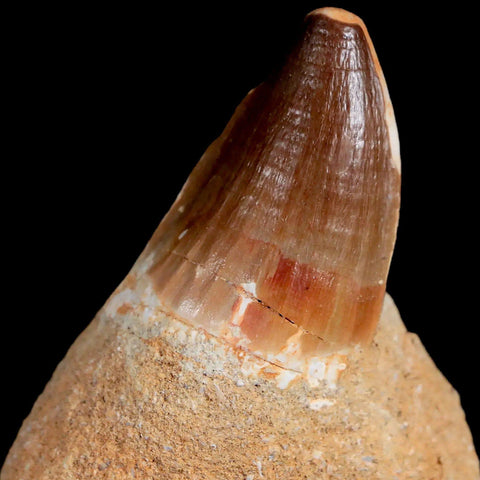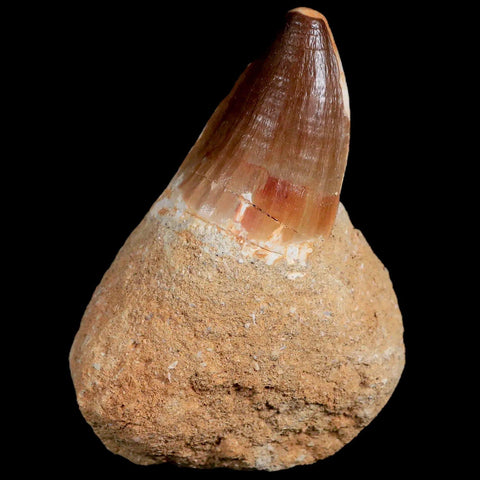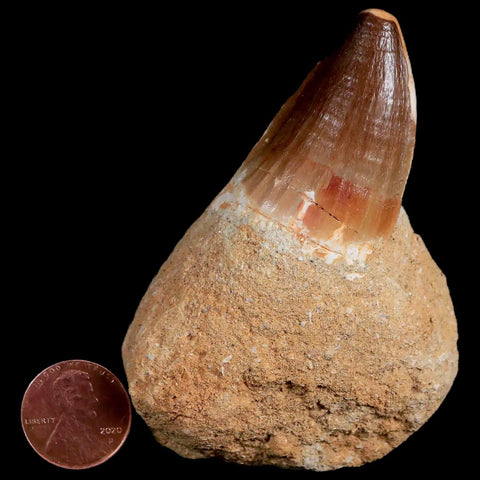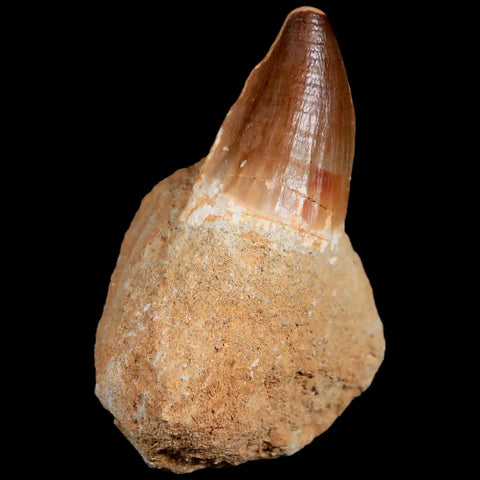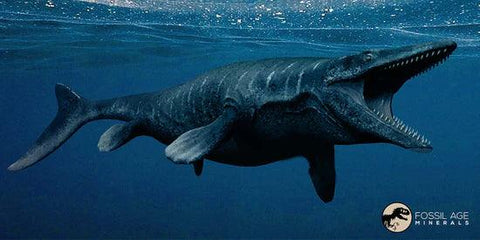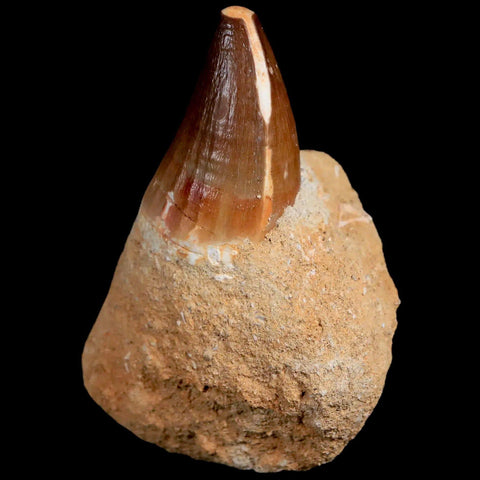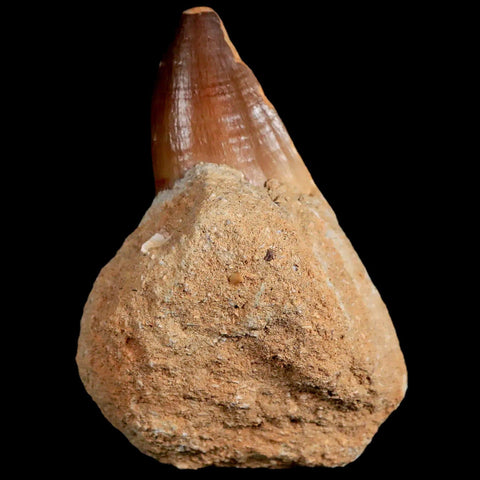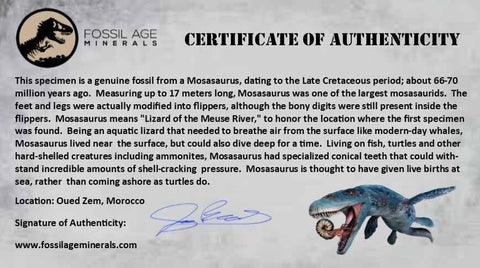1.7" Mosasaur Prognathodon Fossil Tooth In Matrix Cretaceous Dinosaur Era COA
Location: Oued Zem, Morroco
Weight: 4.3 Ounces
Dimensions: 3.3 Inches Long, 2 Inches Wide, 1.6 Inches Thick (Matrix)
Tooth: 1.7 Inches Long, 1.1 Inches Wide
Comes with a Certificate of Authenticity.
The item pictured is the one you will receive.
This is a genuine fossil.
100 - 66 Million Years old, Upper Cretaceous, Maastrichtian Epoch.
Name: Prognathodon (Forejaw tooth).
Named By: Dollo - 1889.
Diet: Carnivore.
Size: Depending upon the species, Prognathodon could range between 6 and possibly just under 14 meters in length.
Known locations: Fossil locations suggest a worldwide distribution, but are especially well-known from Europe and North America.
Time period: Campanian to Maastrichtian of the Cretaceous.
Prognathodon was a late Mosasaur that showed a trend towards a different kind of predation that saw it living like the much earlier basal placodont reptiles of the Triassic, such as Placodus. This means that Prognathodon specialized in eating tough-shelled prey items like shellfish, ammonites, and turtles. The diet of Prognathodon was for a long time just speculation based upon the teeth and jaw construction, but two discoveries in Canada in the early years of the twenty-first century not only revealed the full body shape of Prognathodon but the diet as well. One specimen revealed the presence of turtle and ammonite fossils located where its stomach would have been. Interestingly, it also had a one-hundred and sixty centimeters long fish in its gut, suggesting that while Prognathodon was a specialized predator, it was also opportunistic in its feeding.
Prognathodon had a robust and heavy jaw that would have been capable of withstanding a high bite force supplied by powerful jaw muscles. However, it’s the teeth that should receive special note, as not only are they strong and well-adapted for crushing, but have serrations that can be seen under much more detailed inspection. This makes the teeth specialized for a dual purpose, destroying the protective shells of prey while shearing the flesh within. Another specialization is the presence of bony rings around the eye sockets. This is seen as a deep-water adaptation for the eyes to better withstand the higher water pressure of deep water, something which may have often been necessary when diving for ammonites.
The rationale behind Prognathodon’s dietary transition remains unclear, especially since mosasaurs are typically recognized as apex predators of reptiles and fish. One theory suggests that fierce competition for the apex predator role compelled Prognathodon to adapt by targeting an alternative food source, thereby avoiding direct rivalry. Another possibility is that a decline in the availability of large prey traditionally hunted by mosasaurs necessitated this dietary adjustment. It may also be that Prognathodon sought to exploit a plentiful food resource. Notably, Prognathodon was not alone in this adaptation; the mosasaur Globidens similarly developed large, rounded teeth suited for crushing.

Please be aware of the nature of fossils:
Being buried under the ground for millions of years under tons of pressure tends to be rough. No fossil comes out of the ground whole and perfect. Most fossils have undergone some restoration, while others are altered by man simply to enhance their presentation in different ways. The workers in Morocco do a very professional job of unearthing and preserving these natural treasures; however, commonly, natural cracks are visible on the surface. These are part of the natural beauty of the fossil and are not considered defects.


